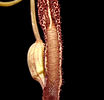top of page

sect. Gymnolobus
sect. Gymnolobus
Aristolochia sect. Gymnolobus represent the New World - Aristolochia. Their distribution range is restricted to the Americas and especially diverse in the respective tropical regions.
The section can be further subdivided into two subsections and a group of 5 species posessing intermediate characteristics. I will just keep these special ones apart from the two main subsections as long as phylogenetic research reveals more about their relationship.
subsect. Pentandrae,
subsect. 'sister-Pentandrae'
and
subsect. Hexandrae.
The subsection Hexandrae is further divided into a
ser. Thyrsicae
and
ser. Hexandrae.
That's not enough yet! The series Hexandrae again consists of 2 subseries named
subser. Anthocaulicae
and
subser. Hexandrae.
Although that may seem like a labyrinth of subgenera at first glance this differentiation makes good sense:
Subsect. Pentandrae can be held apart from all other species by their 5-lobed gynostemium.
They occupy a very restricted distribution range from the southern USA to Mexico (with a single exception to the Caribbean) and mainly consist of odd scrambling, drought-resistant tuberous species with crazy flower shapes (and odours!)
Nevertheless Pentandrae proved to be enormously diverse in Mexico, with new species descriptions following and following the past years.
The series Thyrsicae in subsect. Hexandrae constitute liana-like twining species occuring from Mexico to Brazil.
Their colorful flowers appear in thyrsoid (hence the name!) clusters (called racemes) directly out of the juvenile branches and the old bark.
Species belonging to this group can be distinguished easily by the presence of defined abscission zones at the base of the petiole. Moreover, flowers are foliose and located oppositely to a reduced bractleole.
The seeds of this series are especially simple to assign since they are flat, quite large and have two prolonged side 'wings'. A ripe, opened seed capsule looks exactly like a parachute turned upside down!
Anthocaulicae subser. species are distributed across the very same area like ser. Thyrsicae and can be identified as huge rainforest lianas (a single exception) with solely cauliflorous racemes.
They represent the utterly most tropical species of the Americas and although rarely seen, their flower shapes and especially colours are among the most spectacular of all Aristolochia!
Many new species have been described in the past decades and since the rainforest regions in central Amazonia are still inaccessable to a large extent yet, undescribed species are known and there are still more to be expected.
Almost all other Aristolochia species from the Americas displaying a 6-lobed gynostemium are classified under the term of subser. Hexandrae. Their habits can be extremely variable: procumbent herbs from Argentina or Chile, erect shrubs and small climbers e.g. from Southern Brazil and Hispaniola or large lianas from Venezuela and Guyana - a revision of this 'trash bag' of species and new, better defined groupings would be necessary due to their huge variability!
An outstanding hotspot for these species is currently investigated: Hispaniola and Cuba.
Although several dozen species have been described already, recent field work revealed dozens of completely unassignable and presumably new species from these two islands.
bottom of page





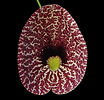
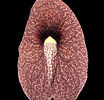
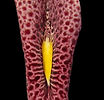


_JPG.jpg)



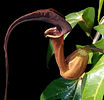


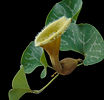
.jpg)
.jpg)



